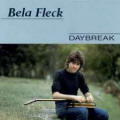
 This large size (about 24 inches high)
cultivar has a wide (60 inches) spreading, low growing habit that makes it unique.
The foliage is broadly wavy, slightly corrugated and
has a deeply lobed base.
Lavender flowers on long, drooping scapes bloom from late July into August. It was
registered by
Paul Aden of New York in 1986 as a sport of a
Japanese seedling. This large size (about 24 inches high)
cultivar has a wide (60 inches) spreading, low growing habit that makes it unique.
The foliage is broadly wavy, slightly corrugated and
has a deeply lobed base.
Lavender flowers on long, drooping scapes bloom from late July into August. It was
registered by
Paul Aden of New York in 1986 as a sport of a
Japanese seedling.
 According to
The Hosta Handbook by Mark Zilis (2000), "I have not seen this plant "burn" as golden
Sieboldianas often do, and it certainly competes with 'Sum and
Substance' and 'Solar
Flare' for the honor of "best big gold"." According to
The Hosta Handbook by Mark Zilis (2000), "I have not seen this plant "burn" as golden
Sieboldianas often do, and it certainly competes with 'Sum and
Substance' and 'Solar
Flare' for the honor of "best big gold"."
 From the
Field Guide to Hostas by Mark Zilis (2014), "...formerly thought to be a Paul Aden origination,
but originator now considered unknown...Its unusual,
wide-spreading mound habit creates an appearance
shared only by its sports...works well as a breeding
plant..." From the
Field Guide to Hostas by Mark Zilis (2014), "...formerly thought to be a Paul Aden origination,
but originator now considered unknown...Its unusual,
wide-spreading mound habit creates an appearance
shared only by its sports...works well as a breeding
plant..."
The New Encyclopedia of Hostas by
Diana
Grenfell (2009) states: "Among the best in this category...Will light up
dark borders...Flowers are densely packed toward the
tip of the scape. The leaf tip pinches and droops in
maturity."


|



